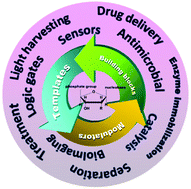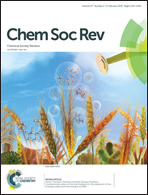Nucleobases, nucleosides, and nucleotides: versatile biomolecules for generating functional nanomaterials
Abstract
The incorporation of biomolecules into nanomaterials generates functional nanosystems with novel and advanced properties, presenting great potential for applications in various fields. Nucleobases, nucleosides and nucleotides, as building blocks of nucleic acids and biological coenzymes, constitute necessary components of the foundation of life. In recent years, as versatile biomolecules for the construction or regulation of functional nanomaterials, they have stimulated interest in researchers, due to their unique properties such as structural diversity, multiplex binding sites, self-assembly ability, stability, biocompatibility, and chirality. In this review, strategies for the synthesis of nanomaterials and the regulation of their morphologies and functions using nucleobases, nucleosides, and nucleotides as building blocks, templates or modulators are summarized alongside selected applications. The diverse applications range from sensing, bioimaging, and drug delivery to mimicking light-harvesting antenna, the construction of logic gates, and beyond. Furthermore, some perspectives and challenges in this emerging field are proposed. This review is directed toward the broader scientific community interested in biomolecule-based functional nanomaterials.



 Please wait while we load your content...
Please wait while we load your content...